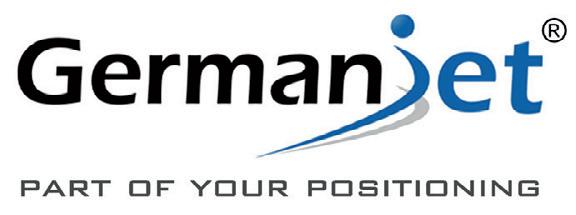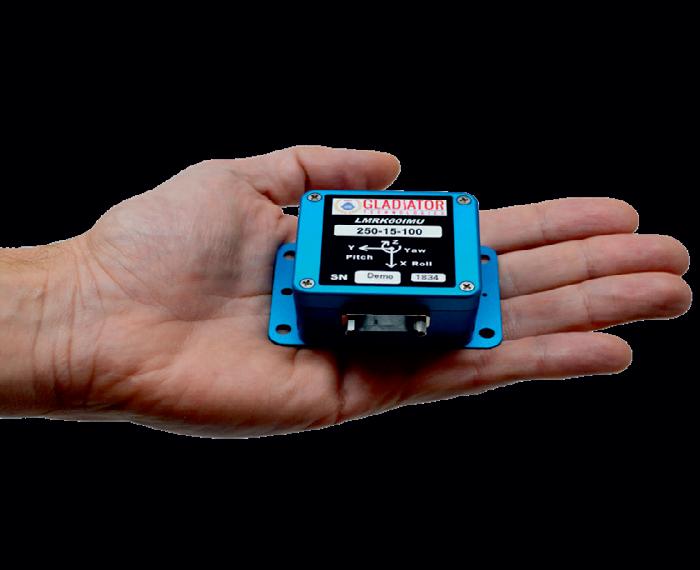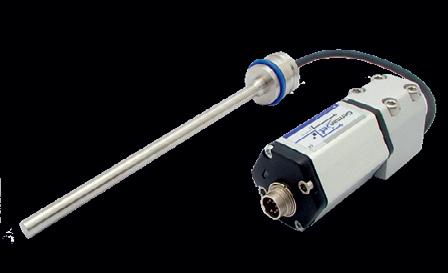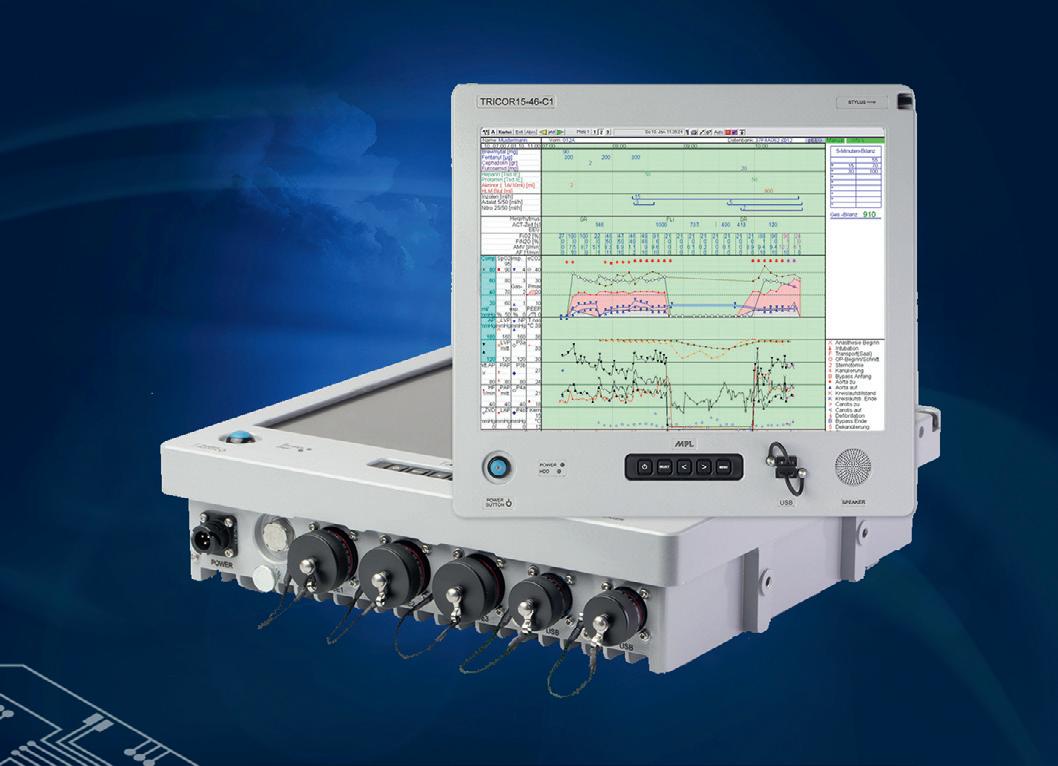
14 minute read
Getting started with digital twins
THE WHAT, WHY AND HOW FOR PROCESS ENGINEERING
Branko Dijkstra, Principal Technical Consultant, MathWorks Australia
One of the primary catalysts for engineering and design teams to be able to actualise the benefits of Industry 4.0 has been the emergence of digital twins.
After many years of excitement and discussion around Industry 4.0, manufacturing, energy and transportation, companies are increasingly realising the benefits of Industry 4.0 applications. One of the primary catalysts for engineering and design teams to be able to actualise these benefits for their companies has been the emergence of digital twins.
What is a digital twin?
A digital twin is a real-time digital representation of a real-world physical asset in operation that reflects the asset’s current condition and provides relevant historical data. Companies can leverage digital twins to analyse the real-time performance, optimise the operation, predict future behaviour or refine control of its assets, such as pumps, engines, power plants, manufacturing lines or fleets of vehicles.
Why use a digital twin?
There are numerous ways engineering teams can design and deploy digital twins to deliver value to their companies and optimise future operations. Asset history Digital twins capture the physical asset’s history — being updated periodically to represent the real asset’s current state. Over time, these past states become the asset’s history. The type of information included in this history differs, based on how the digital twin is being used and what is captured in the current state. For example, a digital twin used for fault classification will capture a history that includes a specific pump’s operational data from its healthy and faulty state. In the future, engineers can then compare the operational data from that pump to the digital twin histories of
© Stock.Adobe.com/au/Blue Planet Studio

other pumps to understand how they behaved under similar faults and predict the effect on the fleet’s efficiency. Maintenance strategies The ability to monitor a whole fleet of assets using digital twins brings advantages to planning operational events and improving maintenance strategies.
For example, when a specific pump is nearing failure, the digital twin can assess how this will affect the efficiency of the fleet and potential costs. This informs the company when making the decision between ordering a new part and waiting for it to arrive or paying more for expedited shipping to get the part as soon as possible. Simulating future scenarios Companies can use digital twins to simulate future scenarios to see how factors such as weather, fleet size or different operating conditions affect performance. This approach helps manage assets and optimise operations by informing maintenance schedules or flagging expected failures in advance.
Digital twins can be leveraged by companies for a variety of applications, including anomaly detection, operations optimisation and predictive maintenance. Anomaly detection The digital twin models run in parallel to the real assets and flag operational behaviour that deviates from expected behaviour in real time. For example, a petroleum company may stream sensor data from offshore oil rigs that operate continuously, while the digital twin model looks for anomalies in the operational behaviour to flag potential equipment damage. Operations optimisation Companies can apply variables such as weather, fleet size, energy costs or performance factors to trigger hundreds or thousands of simulations to evaluate readiness or necessary adjustments to current system setpoints. This approach makes it possible to optimise system operations to mitigate risk, reduce cost or gain system efficiencies. Predictive maintenance In industrial automation and machinery applications, companies can use digital twin models to determine remaining useful life and the most opportune time to service or replace equipment.
In a characteristic smart connected system topology as shown in Figure 1, the digital twins could be executed on the smart asset, at the edge or on the IT/OT layers depending on the required response time of the application. For example, predictive maintenance, a common Industry 4.0 application, generally requires making real-time or time-sensitive decisions — meaning the digital twin should be integrated directly with the asset or at the edge.
How does a digital twin work?
An IoT application drives what needs to be modelled as part of a digital twin. A digital twin model will include the required components, behaviours and dynamics of the IoT asset. Modelling methods generally can be grouped into two types: first principles or physics-based methods (eg, mechanical modelling) and data-driven methods (eg, deep learning). A digital twin can also be a composite of various modelled behaviours and modelling methods and is likely to be elaborated on over time as more uses are identified.
The models must be kept up to date and tuned to the assets that are in operation, which typically involves direct streaming of data from the assets into algorithms that tune the digital twin. This makes it possible to consider aspects like asset environment, age and configuration.
Once the digital twin is available and up to date, it can be used any number of ways to predict future behaviour, refine the control or optimise operation of the asset. Some examples include simulating sensors that are not present on the real asset, simulating future scenarios to inform current and future operations or using

Figure 1: A characteristic smart connected system topology showing where digital twins should be deployed.
Figure 2: Sensor measurements and operating conditions are sent from the pump to the model and the model outputs the current state of the pump.

the digital twin to extract the current operational state by sending in current real inputs.
How to build a digital twin
Engineers will be increasingly asked to develop digital twins for their company given the above benefits. Here are two methods design teams must keep in mind as they prepare, build and apply their digital twin models. Data-driven model A company looking to optimise maintenance schedules by estimating remaining useful life (RUL) will use a data-driven model, as the type of the data from the asset will determine which model teams will be using. Similarity models can be used if the company has complete histories from similar machines. If only failure data is available, then survival models can be used, and if failure data is not available, but the safety threshold is known, a degradation model can be used. If failure data is not available but a safety threshold is known, degradation models can be used to estimate RUL. In this RUL scenario, the degradation model is constantly updated using the data from the asset measured by different sensors — such as pressure, flow and vibration in the case of a pump. Physics-based model If a company wants to simulate future scenarios and monitor how the fleet will behave under those scenarios it would use a physics-based model, which is created by connecting mechanical and hydraulic components. This model is fed with data from an asset, and its parameters are estimated and tuned with this incoming data to keep the model up to date. Engineers can then inject different types of faults and simulate the pump’s behaviour under different fault conditions.
How to apply digital twins
Design teams need to create a unique digital twin for every individual asset. This means that for each asset at a different location, teams must create a unique digital twin that has been initialised with the specific asset’s parameters. The total number of unique twins will depend on the application. If teams are modelling a system of systems, they may or may not need a twin for each system of components depending on the required level of precision. For example, if the intention is to run failure prediction and fault classification, design teams need to create different models that serve these different purposes.
Delivering value with digital twins
The flexibility and various potential benefits of digital twins make them a top priority for companies transitioning to Industry 4.0. Having an up-to-date representation of real operating assets lets engineering and design teams unlock insights in data to optimise, improve efficiencies, automate and evaluate future performance — all delivering cost savings and shorter development timelines.
MathWorks Australia
au.mathworks.com
DATA ACQUISITION DEVICE
The ICP DAS PET-7H24M is a high-speed data acquisition device with a built-in Ethernet communication port for data transfer over a network and includes four high-speed 24-bit differential analog input channels (with 128 kHz sample and hold for all four channels), two analog output channels, three digital input channels, four digital output channels and one encoder input channel.
The module provides a programmable input range on all analog channels, and the digital output has short-circuit and overload protection. The encoder input channel can be configured in quadrant, pulse/direction or CW/CCW input mode.
The PET-7H24M also provides 4 kV ESD protection as well as 2500 VDC intra-module isolation. The 24-bit ADC includes built-in Sinc3 filtering to adjust the appropriate sampling rate and filter out modulator and signal noise. The PET-7H24M is suitable for a wide range of mobile/portable measurement applications.
ICP Electronics Australia Pty Ltd
www.icp-australia.com.au




DIGITAL PANEL METER
Lumel's N21 digital panel meter is designed for the visualisation of industrial processes, and features a universal input, universal power supply and universal OLED display, making it a versatile display, suitable for use in many applications.
It offers a universal measuring input for standard process signals and temperature sensors and a normally open relay alarm output. It can be powered from a universal power supply from 24 V up to 230 V, AC or DC, and can provide an auxiliary 24 VDC power supply for loop-powered sensors.
The N21’s universal OLED display can be oriented horizontally or vertically and is user-programmable by using the appropriate firmware. Configuration is via a mini-USB connection with free software, and includes the selection of measured value, rescaling of indications, accuracy of measured value (decimal point), alarm output mode, measurement averaging time, firmware update and engineering units
The N21 panel meter has a protection grade of IP65 and external dimensions of 48 x 96 x 64 mm.

Pacific Automation
www.pacificautomation.com.au
The Field Gauge LC20

Reference-grade accuracy in a durable, hand-held pressure gauge
• Maintains calibration at an impressive ±0.1% of full-scale accuracy with ranges up to 70 MPa. • Connects to a PC via USB or wireless to change settings or to perform data logging. • Features clear, intuitive controls and a large, back-lit display. • Tough, powder-coated aluminum exterior protects the internal components so it holds up to abuse in the field. It’s also waterproof up to 1 meter (IP67).
Choose the wireless option and monitor tests from the comfort of your truck!
To learn more visit ralstoninst.com/wnipt-LC20 or scan the QR code
T-JUNCTION BOX FOR POWER AND SIGNALS
The ILME CYG 9KAXI3 T-junction box is a ready-to-use customisable solution for industrial applications requiring the distribution of power and control signals.
The pre-assembled system includes three compact bulkhead mounting housings with stainless steel locking lever and antiageing gasket (CKAX 03 I) mounted on a robust UV-resistant aluminium distribution box (APV 9), offering a construction suitable for outdoor use and with an IP66/67 degree of protection.
Due to its structure, it allows a power and signal bus line on the pair of aligned connectors and a derivation line on the third one, which can be disconnected — avoiding any bus line interruption and making it suitable for daisy-chain distribution systems.
The T-Box can be used with the whole range of compact 21.21 ILME inserts and hoods and can be supplied in a variant for aggressive environments and for electromagnetic compatibility (EMC) according to the installation requirements.
Treotham Automation Pty Ltd
www.treotham.com.au











ANSTO, which produces nuclear medicine vital to the Australian health industry and undertakes research critical to many other industries, is now using a new Swisslog automated storage and retrieval system (ASRS).
The federal government campus in Lucas Heights, NSW, about 40 km south of the Sydney CBD, will utilise Swisslog’s technology to safely move 200-litre drums of low-level contact handled radioactive waste. The waste will be transported through a combination of conveyors, pallets (including 908 individual pallet locations), racking and Swisslog’s S12 Vectura crane.
ANSTO conducts some of Australia’s most important national scientific research and operates much of Australia’s landmark and national infrastructure, including one of the world’s most modern nuclear research reactors, OPAL.
“The technology solution for ANSTO has a number of additional safety benefits, specifically designed for this unique application,” said Swisslog Head of Sales and Consulting, Sean Ryan. “We included a drum inspection station, from which ANSTO will continue to accurately monitor drum characteristics. The entire system provides end-to-end traceability to optimise safety, tracking and efficiency.”
In addition to safety benefits, ANSTO’s new ASRS optimises use of available space by stacking pallets in a compact grid-like racking area, to make the best use of the available footprint of the site.
Swisslog’s ASRS is seamlessly integrated with ANSTO’s warehouse control system (WCS) to provide receipt and inspection timestamp tracking (such as compliance to pallet, weight dimensions and autoreceipt), zoning, accurate reporting and an intuitive interface with the host system.
Paula Berghofer, General Manager, Waste Management Services, ANSTO, said that in order to optimise safety and ensure the responsible, traceable management of radioactive waste at the facility, “the drums will be inspected periodically, and radiation levels will continue to be monitored”.
“These drums will be housed in the ASRS and then will be processed through a super-compactor into over-packs. It is intended that they would eventually be destined for Australia’s National Radioactive Waste Management Facility once it is established.”
ANSTO manages radioactive waste safely and in accordance with all standards set by several regulators including the independent nuclear regulator, ARPANSA.
Swisslog’s Vectura crane technology used at ANSTO is an energyefficient high-bay warehouse pallet stacker crane used in more than 2000 sites globally. The company said that Vectura cranes can perform equally well in temperatures as low as -30°C in a frozen food warehouse or in ambient environments as high as +50°C. Depending on the storage density and throughput requirements of a warehouse, it can handle one, two or more loads in single, double, triple and multi-deep layouts. In high buildings and where land space is limited, Vectura cranes operate at heights up to 50 m. Vectura cranes are also a more sustainable technology, with up to 20% lower energy consumption compared to traditional cranes, due to their mast design and lighter crane weight. “Swisslog recently celebrated over 50 years of Vectura cranes. The technology — which has continuously improved over the decades — is one of the world’s most trusted ASRS solutions with nearly 4000 individual cranes in use around the globe,” Ryan said.

RUGGED EMBEDDED COMPUTER
The MPL TRICOR15 is a rugged embedded computer that combines a built-in 15″ screen and a core functional module based on MPL’s single board computer. The system is constructed with a military-grade, high-strength and lightweight HE30-grade aluminium alloy housing. Its modular architecture allows the system to be configurable with a number of options. The fanless design helps with the noiseless operation, increasing reliability, and in giving the system a longer MTBF. The operating temperature range of the TRICOR15 is -20 to +60°C. Operational accessories such as MIL connectors are available on the sides for easy access. The unit has console mounting provisions and has been designed for applications that need a rugged and reliable solution. The TRICOR15 meets the MIL-STD-810F and MIL-STD-461E standards and is suitable for all applications. It also supports up to 64 GB memory and has space for 2.5″ SSD and three Gigabit Ethernet ports.
Backplane Systems Technology Pty Ltd
www.backplane.com.au





